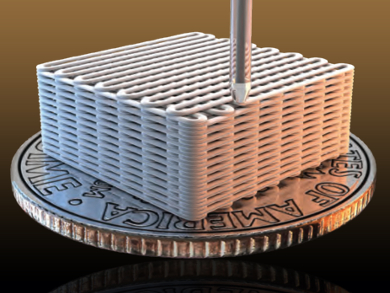Graphene has extraordinary mechanical and electric properties. Aerogels are ultralight porous materials and exceptional insulators. Combining the two and producing graphene aerogels has so far resulted in largely random pore structures, limiting their uses and customizability.
Marcus A. Worsley, Lawrence Livermore National Laboratory, Livermore, CA, USA, and co-workers have succeeded in 3D printing graphene aerogel lattices with a defined structure. The team printed the structures in a liquid bath and subsequently used supercritical drying to give the aerogel. The products have a high surface area, excellent electrical conductivity, a low density, and mechanical stiffness. The lattices also exhibit supercompressibility, with full recovery after being subjected to large strains. The researchers were able to vary the structure of the lattice to customize the properties of the aerogel.
This approach could allow the fabrication of complex customized aerogel structures for a wide range of applications, such as energy storage, sensors, nanoelectronics, catalysis and separation.
- Highly compressible 3D periodic graphene aerogel microlattices,
Cheng Zhu, T. Yong-Jin Han, Eric B. Duoss, Alexandra M. Golobic, Joshua D. Kuntz, Christopher M. Spadaccini, Marcus A. Worsley,
Nat. Commun. 2015, 6, 6962.
DOI: 10.1038/ncomms7962




